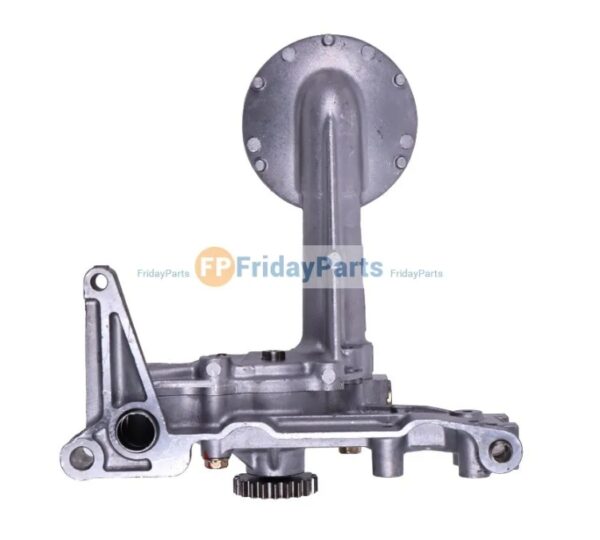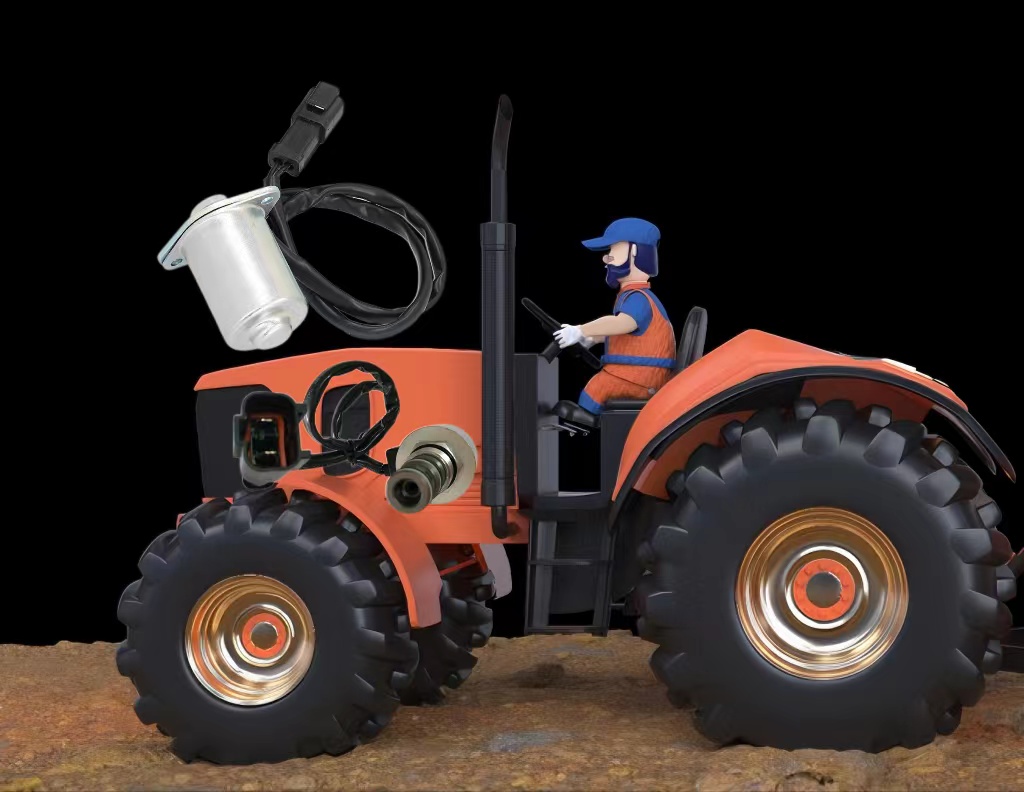The oil pump ensures lubrication of the components in off-road machinery and vehicles, ensuring the stable operation of the vehicle. Although, it cannot be guaranteed that your oil pump will not need to be replaced over several years, understanding these signs to be aware of will help you minimize losses.
How does the oil pump work?
It suctions and delivers lubricating oil from the oil tank to the internal components of the engine, thereby maintaining lubrication and cooling within the engine.
Oil suction
As the camshaft rotates, the eccentric wheel pushes the pump diaphragm lever, causing the diaphragm to descend and create suction. This suction draws gasoline from the fuel tank and passes it through the fuel line, fuel filter, and into the oil chamber of the fuel pump.
Oil delivery
When the eccentric wheel rotates beyond a certain angle and no longer pushes the rocker’s arm, the pump diaphragm spring extends, causing the diaphragm to rise and pressurize the gasoline through the outlet valve into the float chamber of the carburetor.
Common signs of a bad oil pump
Low oil pressure
The purpose of the oil pump is to maintain the correct oil pressure, and a faulty oil pump can result in a decrease in oil pressure. If you notice warning lights on the vehicle’s dashboard illuminating or experiencing reduced power, it means low oil pressure. You should immediately turn off the engine and do the inspection.
Engine overheating
Oil pump failure can also lead to reduced lubrication. This means that there will be increased friction between the engine components, resulting in elevated engine temperatures.
Difficult starting
If you are unable to start your tractor even after attempts, it is another bad sign, as the fuel system is not getting an adequate supply of fuel.
Unusual noise
The oil pump only makes noise when there is a problem, such as worn or damaged internal gears, which may produce a buzzing or whirring sound. Plus, insufficient lubrication can cause excessive friction in mechanical components, resulting in noise.
What caused it happen?
Usually, off-road machinery engines operate in bad environments, with many engine components interacting, thus presenting numerous potential issues that may lead to oil pump failure. Thus, understanding these reasons is key to avoiding problems with engines.
- Inadequate oil in the tank
Waiting for the oil warning light before refueling causes oil pump instability, impacts cooling, increases engine power consumption, and ultimately leads to damage.
- Oil contamination
If the oil contains an amount of impurities and foreign objects, it’s highly likely to clog the suction filter of the oil pump. Consequently, impurities can infiltrate the oil pump, leading to damage.
- Irregular oil changes
Failing to change the oil regularly can result in the accumulation of various impurities in the oil, such as dirt, metal particles, moisture, etc. All of them may originate from engine wear, chemical reactions, or external contaminants entering the system. So, you need to change the oil promptly to avoid oil lubrication performance, further damaging components and affecting engine operation.
- Long-term use of unchanged filters
The prolonged use of filters can reduce impurity filtration performance, with contaminants deposited in the fuel supply system’s pipelines causing blockages, thereby resulting in oil pump failure.
- Aging or wear of components
Many seals and bearings may age, harden, or wear over time, leading to decreased sealing performance within the oil pump, causing leaks or unstable oil pressure.
- Insufficient or non-functioning motor speed within the oil pump.
- Faulty wiring in the oil pump circuit.
- Improper installation
If a new oil pump fails shortly after replacement, it indicates an installation issue. It’s wise to check for proper installation.
What should I do?
If these signs appear, the best choice is to promptly inspect and repair the faulty oil pump to minimize losses. You should:
- Stop using the tractor.
- Use an oil pressure gauge to check oil pressure and flow.
- Inspect the oil pump and related engine spare parts.
- Repair or replace the oil pump (if it’s severely damaged, replacement with a new oil pump is necessary).
- Repair or replace other affected components.
- Regular maintenance and inspections (including regular oil and filter changes)
How much does it cost to replace a new oil pump?
For professional mechanics, replacing a new oil pump can cost from $400 to $3,000 or even higher on average. As you know, it always depends on the type of engine models and labor costs.
For a DIY replacement, if you opt to do it yourself (with years of experience and professional skills), the average cost for a new oil pump mainly ranges from $50 to $1900, depending on your engine type and model. Check oil pump prices.







Leave A Comment